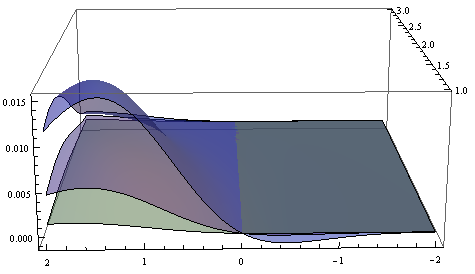I'm trying to optimise numerically a function that entails computing the expected value of a truncated trivariate normal distribution and this is taking extremely long -I also get warned about NIntegrate::slwcon
I've seen posts (such as this) about rewriting the problem as a differential equation, however I couldn't rewrite the problem successfully.
Here's a simplified version of my problem (focusing on the expectation, which is what slows down the optimisation and produces NIntegrate::slwcon ):
JointD[X_,Y_,Z_]:= PDF[MultinormalDistribution[
{0,0,0}, {{1, 0.5, 0.5}, {0.5, 1, 0.5}, {0.5, 0.5, 1}}], {X,Y,Z}]
NIntegrate[X*JointD[X,Y,Z],{X, -∞, ∞}, {Y, 1, ∞}, {Z, 2, ∞}]

